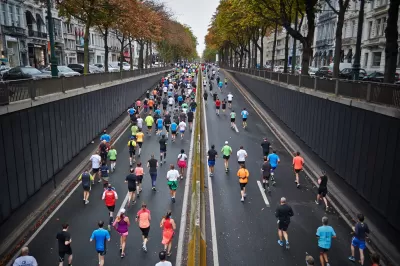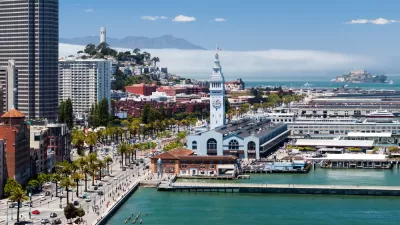Enough European cities have shown it can be done. It's time for U.S. cities to follow suit.

According to an article by James Nevius, cities in Europe are blazing a new trail of multi-modal planning, and it's time for the United States to get on board.
It can be easier to imagine European cities car-free because for so much of their histories—whether they are 300 or 3,000 years old—they were. Streets evolved as pedestrian thoroughfares, and cars still seem like interlopers. If you are a city with actual medieval walls, like York in the U.K.—a pioneer in pedestrianizing its old city—those walls can offer easy templates for vehicular “no-go” zones. This is true in large cities, too, such as London and Madrid. It’s no coincidence that the Madrid Central plan, which keeps older vehicles out of the center of Spain’s largest metropolis, covers the 1.8 square miles once surrounded by the ancient city walls or that London’s Ultra Low Emission Zone is rolling out in the densest and oldest part of that city.
Nevius argues that cities in the United States are capable of the same kinds of changes—because most cities in the United States are older than the automobile.
Nevius also lists the kinds of steps U.S. cities could take, "relatively quickly and inexpensively," to effect auto-independence:
- Make streets multimodal
- Implement congestion pricing and/or limited traffic zones
- Eliminate street parking
- Boost transit options
- Reclaim plazas and other public space for people
The article includes details on each of these policy proposals to help get U.S. cities headed in the car-free direction.
FULL STORY: How to end traffic

Alabama: Trump Terminates Settlements for Black Communities Harmed By Raw Sewage
Trump deemed the landmark civil rights agreement “illegal DEI and environmental justice policy.”

Planetizen Federal Action Tracker
A weekly monitor of how Trump’s orders and actions are impacting planners and planning in America.

The 120 Year Old Tiny Home Villages That Sheltered San Francisco’s Earthquake Refugees
More than a century ago, San Francisco mobilized to house thousands of residents displaced by the 1906 earthquake. Could their strategy offer a model for the present?

Ken Jennings Launches Transit Web Series
The Jeopardy champ wants you to ride public transit.

BLM To Rescind Public Lands Rule
The change will downgrade conservation, once again putting federal land at risk for mining and other extractive uses.

Indy Neighborhood Group Builds Temporary Multi-Use Path
Community members, aided in part by funding from the city, repurposed a vehicle lane to create a protected bike and pedestrian path for the summer season.
Urban Design for Planners 1: Software Tools
This six-course series explores essential urban design concepts using open source software and equips planners with the tools they need to participate fully in the urban design process.
Planning for Universal Design
Learn the tools for implementing Universal Design in planning regulations.
Clanton & Associates, Inc.
Jessamine County Fiscal Court
Institute for Housing and Urban Development Studies (IHS)
City of Grandview
Harvard GSD Executive Education
Toledo-Lucas County Plan Commissions
Salt Lake City
NYU Wagner Graduate School of Public Service





























